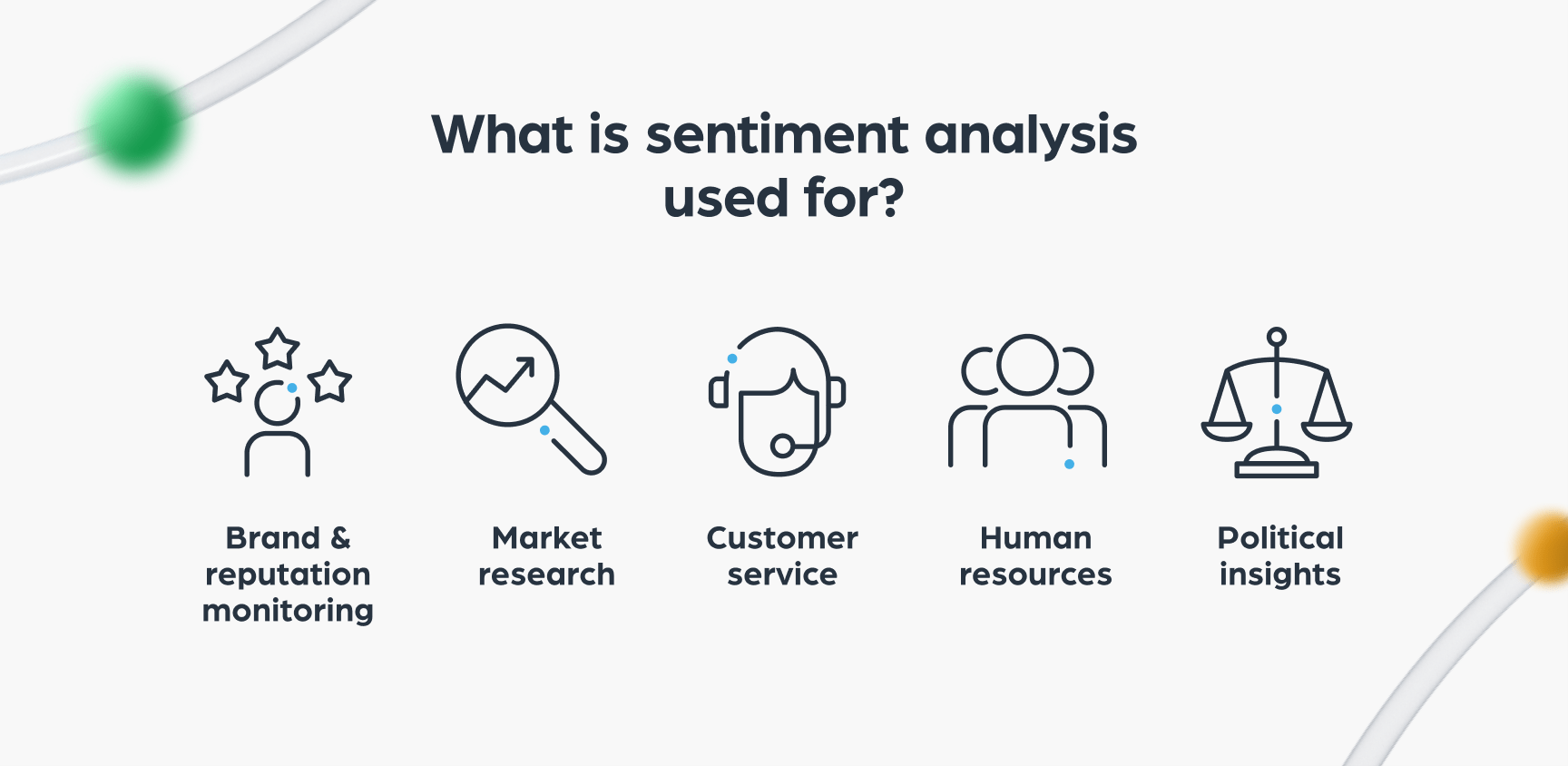Through dissecting and understanding sentiment and the emotions expressed in public discourse, organizations can gain valuable insights into the public’s feelings towards their brand, product, or services, giving them the information they need to make informed decisions.
Sentiment analysis is the process of using natural language processing, text analysis, and computational linguistics to identify and extract subjective information from text. This information can help organizations make informed decisions based on the positive, neutral, or negative sentiment present in a text.
With the proliferation of digital communication and a constant stream of data and information published online, sentiment analysis provides a way to quickly and effectively understand the opinions of customers, competitors, and other stakeholders. In this post, we’ll explore the basics of sentiment analysis, its use cases, and how turning to a news API can help create superior sentiment analysis.
How sentiment analysis leads to more informed decisions
When used in business, sentiment analysis can be a powerful process that is used to understand public opinions, attitudes, and emotions. Sentiment analysis is a process often used by monitoring or data solutions as a core part of the way certain platforms monitor events and digital mentions that might have an impact on an organization. However, it’s not only monitoring solutions that rely on sentiment analysis but bots and AI platforms like ChatGPT or customer support bots also use it to learn from their users and provide a better experience. When done correctly, the process of sentiment analysis can be useful in providing an end user with more accurate data that can help with forecasting, creating more relevant offerings, and mitigating the risk of future damage.
That said, sentiment analysis doesn’t always come easy. The success of the process highly depends on having a reliable stream of data to base the analysis on. In other words, sentiment analysis can’t function at its best if your monitoring system isn’t relying on the widest coverage of content out there.
For sentiment analysis to be useful in a workflow, it needs to line up with a human assessment. When text uses sarcasm, ambiguity, non-text elements such as emojis, or even if it’s multilingual, this can present a challenge to the standard sentiment analysis process.
Sentiment analysis is accurate around 80% of the time, and while that’s a relatively high level of accuracy, it still leaves room for error. With new technology constantly being developed to sharpen this number, sentiment analysis is becoming more and more accurate. Still, one of the best ways to increase the reliability of sentiment analysis output is having a steady stream of data from a wide range of sources that can be used to gauge sentiment.
Five common sentiment analysis use cases
To better understand how sentiment analysis works in practice, let’s take a look at five use cases that demonstrate how sentiment analysis and data can benefit monitoring solutions in different fields.
1. Brand and reputation monitoring
Sentiment analysis is used to help reputation monitoring solutions gain insight into how customers feel about a particular brand or product. Data obtained from various news sources can be used to inform decisions on how to best manage a company’s online reputation and improve customer experience. By analyzing the most current news items that mention a brand, companies can use sentiment analysis to identify patterns in customer feedback and areas of improvement to adjust their strategies accordingly.
2. Market research
Companies that offer market research solutions can use sentiment analysis to learn more about consumer opinions on certain products and services. This can help companies pinpoint areas for improvement and understand which areas are performing well. Sentiment analysis that relies on up-to-date news data will be helpful in identifying emerging trends and consumer preferences, providing companies with data to better tailor their offerings to customers’ needs. Additionally, sentiment analysis that uses news data can help market research solutions pinpoint precisely how customers feel about a product and find areas to improve it.
3. Customer service
Customer service solutions can also apply sentiment analysis to increase customer satisfaction and enhance the customer experience. Aside from using sentiment analysis to improve inbound customer support in call centers or service emails, when paired with high-level news data, it can be a way to proactively monitor potential issues before they arise. Using NLP, sentiment analysis allows customer service teams to sort through news items to search for negative sentiment before customers even begin to reach out. This can help mitigate the risk of larger issues related to major service events such as product recalls, faulty items, or a gap in a company’s services.
4. Human resources
Employee turnover is costly. Depending on the industry and the position, the cost of replacing an employee can be anywhere between 100%-213% of the employee’s salary. Especially in large companies where turnover tends to be higher, human resources teams are turning to news data providers for insights on how to better retain their employees. By using news data to inform sentiment analysis, companies can understand what positive or negative feelings are publically discussed. This can help companies understand the negative feelings employees might harbor and create strategies to turn them around before they leave. Additionally, it’s helpful for HR teams to understand public sentiment so that they’re aware of what information candidates might have on their company and create a strategy to attract more talent.
5. Political insights
Data is an essential part of running a political campaign. When offering data analysis and insights to political candidates, it’s important to be able to analyze the sentiment behind news data in order to better gauge the candidate’s standing and the campaign’s success. Sentiment analysis enables monitoring solutions to better understand the public’s opinion by analyzing key news items in order to provide more accurate insights into the political climate. Using NLP and the sentiment analysis process to look at news can also help with identifying key topics and trends important to the public that can be used to build and inform a candidate’s campaign and predict how certain policies might be perceived by voters.

How a news API can boost your sentiment analysis?
A news API can help monitoring solutions that use sentiment analysis to generate insights faster and at scale. News data can provide access to large amounts of media information that can be used to train NLP algorithms, which can then be used to identify and analyze sentiment in large amounts of text data.
Analyzing news sentiment is done on two different levels: document-level and entity-level. Document-level sentiment analysis looks at the sentiment of a text, such as an article in the news. On the other hand, entity-level analysis examines the sentiment associated with an entity in a text, such as a brand or a person mentioned. Using a news API to analyze the latter can provide valuable insights into how a particular entity is viewed by different groups of people. A quality news API provides a more in-depth view of entity-level sentiment, empowering brands and businesses to use these insights to create stronger predictions.
News APIs can also be used to compare the sentiment of news stories over time by factoring in historical news items as well. This can be used to track public opinion on ongoing current events as well as the evolution of sentiment over time. This information can be used to help uncover emerging trends and inform decisions on how to respond to changing public opinion.
News data is also helpful in predictive analytics by learning how to apply sentiment analysis to future data, enabling more accurate predictions about how people may respond to certain news events. In addition, a good news API can help with data acquisition and scrubbing, providing your monitoring solution with only the most relevant news items and filtering out all the noise that can throw off your algorithm or lead to inaccurate results.
Coupling a news API with the sentiment analysis process to analyze large quantities of news items can help monitoring solutions discover patterns in the data that might indicate a particular sentiment toward a topic.
For example, an analysis service that looked at restaurant feedback to gauge customer sentiment and emotion used data gathered from a news API to parse diners’ experience and provide restaurants with more accurate information about areas for improvement.
To wrap up
Data services that rely on up-to-date information to feed their analysis need to handle large quantities of unstructured information. It can be difficult to sort through it and extract meaningful data when there’s so much to work with. A tool like a news API helps monitoring solutions not only gather relevant data but also analyze sentiment to provide insights at scale, saving you a lot of time and resources while empowering you to deliver the best possible analysis to your customers.
Chat with a data expert today to see how Webz.io’s News API can help you boost your sentiment analysis strategy.




